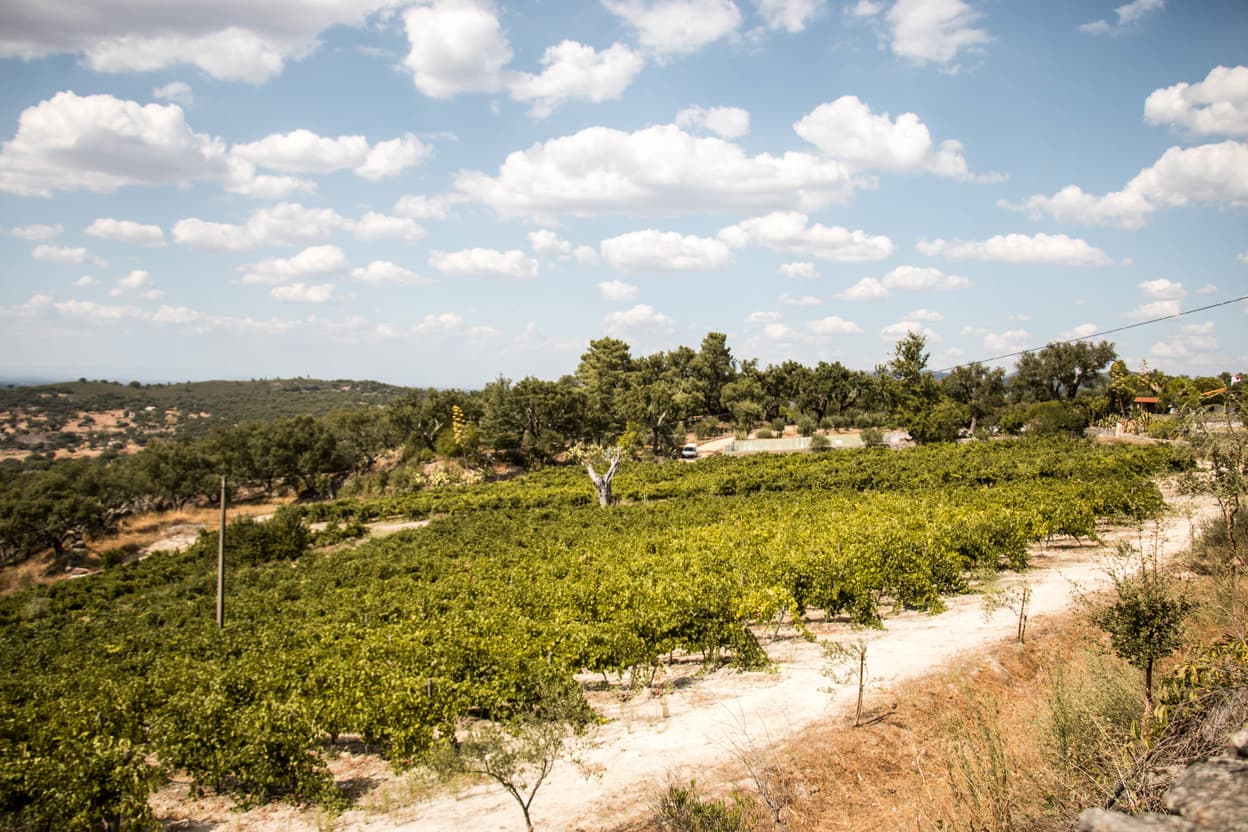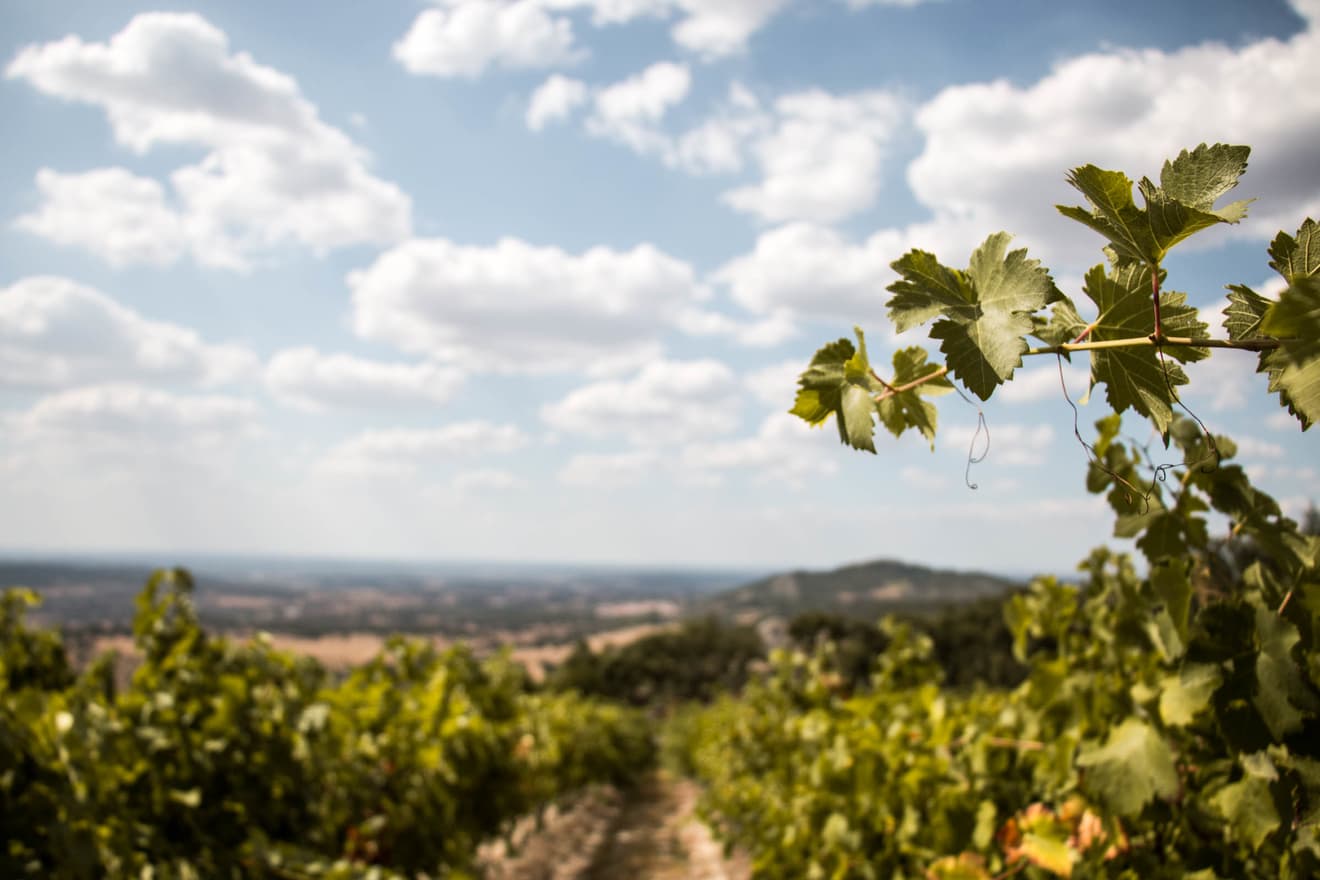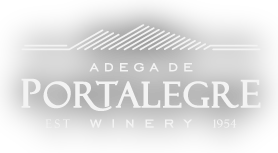Quinta da Cabaça
Quinta da Cabaça is located at an altitude between 600m and 700 and is characterized by its clayish soils with granite outcroppings and a climate of Atlantic and Mediterranean influence. With an area of 22hectares, here we can find Trincadeira, Aragonez, Castelão, Alicante Bouschet, Cinsault, Grand Noir e Grand Bouschet (red) and Arinto, Arinto de Alcobaça, Fernão Pires, Pérola, Alva e Roupeiro (white)

At the same time, there is a test field with about 24 different grape varieties, such as: Arinto, Tamars, Excelsior or Liona, Chassela, Fernão Pires, Muscat Redondo, Boal of Alicante, Vale Grosso or Manteúdo, Alva or Roupeiro or Siria, Muscat Banana, Red Ceuta, Pearl or Assario, Galician Arinto , Ferral, Trincadeira, Aragonez, Tinta Francesa or Alicante Bouschet, Grand Noir or Grand Bouschet, Cinzaut, Tinta de Olho Branco, Hamburg Muscat, Periquita or Castelão, and Moreto.
Quinta da Cabaça has always been a unique place concerning biodiversity and, in the latest survey, was registered the presence of many species such as Black Oak, (Quercus pyrenaica), Strawberry Tree (Arbutus unedo), asparg white Cássia (Osyris alba), Olive Tree (Olea europaea subsp. Sylvestris), wild asparagus (asparagus aphyllus), Hawthorn (Crataegus monogyna), Uva-de-cão (Tamus communis), Briônia (Bryonia cretica), Alecrim-dos-muros (Phagnalon saxatile), Amor-de-hortelão (Galium aparine), Erva-de-são-roberto (Geeranium purpureum), Salsaparrilha-bastarda (Smilax aspera), Silvas (Rubus ulmifolius), Giesta-branca (Cytisus multiflorus), Campainhas (Campanula lusitanica) and Ervilhaca-mansa (Vicia sativa subsp. Nigra).


